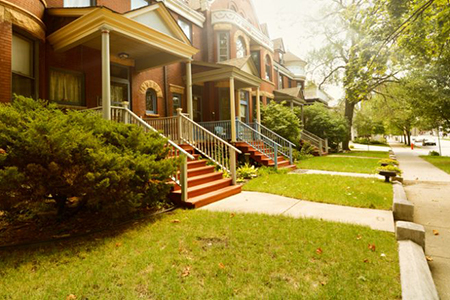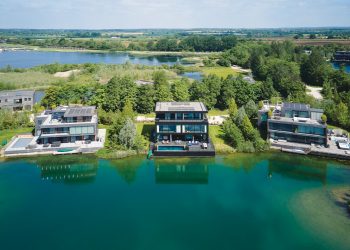Chicago has a lot of great things, like a winning baseball team and deep dish pizza—but let’s face it, that’s getting basic. If you hop on the L for a quick ride west, you will find yourself at the gates of Oak Park. Before you think I’m sending you to a boring park, hear me out. Even if Oak Park, originally Oak Ridge, was named after the oak trees that covered the area, the present-day neighborhood is nothing like an oak tree park…for the most part. The ancient land of Pottowatomie, Sac, and Fox Indians has seen many things in its lifetime—things that it is ready to share with you.
Since 1835, Oak Park has been a neighborhood of entrepreneurs, starting with Yorkshire natives Joseph and Betty Kettlestrings. (How amazing is that last name?)
Given that their frame house was the only building to be found between Chicago and the Desplaines River, it turned into a “tavern,” or, as we’d say in this day and age, a bed and breakfast. The Kettlestrings’ nightly rate was 50 cents. Even though the Kettlestrings got some neighbors in the following years, there was still no school in sight, forcing the family to rent out their farm and move back to Chicago. As fate would have it, in 1935, their old house—now located on Scoville and Lake Streets—was torn down to make space for the OPRF High School expansion.
Thanks to Galena & Chicago Union Railroad, the Kettlestrings were able to continuously sell their land to newcomers. Because there was already a post office by the name of Oak Ridge, this one had to be named Oak Park, and the railroad station was named in accordance.
Just as one man’s meat is another man’s poison, the Chicago Fire of 1871 was pretty bad for everybody who was affected by it, but the fleeing population turned the neighborhood into a suburb, which was great. Churches sprouted everywhere, earning Oak Park the nickname “Saints’ Rest.” And saintly it was. Thanks to Henry Austin Sr., an Illinois legislator, the Illinois Temperance Act was passed and the sale of alcohol was banned for 100 years. This is mighty ironic, since Oak Park is also the birthplace of Ernest Hemingway, a major alcoholic.
However, the neighborhood has come a long way from the days when its first high school graduating class had only three students. For one, they’ve resumed the alcohol business. Frank Lloyd Wright also designed many of the homes in Oak Park, resulting in a stunningly quaint suburb. Lake Street became a market hub for the area, with stores like Marshall Fields and The Fair opening branches along it. Even though the idea of opening a movie theater was controversial, the proposition was successfully passed in 1932. By this time, the village’s population was that of 64,000 (as opposed to 52,000 today). In its days of expansion, Oak Park was known as the “World’s Largest Village.”
Today, Oak Park is still a vibrant and diverse community offering a breath of fresh air when visiting Chicago. For the literature buffs, you will be delighted to hear Hemingway’s birthplace and boyhood home are located here, as well as a museum. But seriously, the breathtaking Frank Lloyd Wright houses and quaint restaurants down Lake Street are definitely worth a morning or afternoon slot in your Chicago itinerary.
Source: Oprfhistory.org
Gabrielle van Welie is RISMedia’s editorial intern. Email her your real estate news ideas at gvanwelie@rismedia.com.
This was originally published on RISMedia’s blog, Housecall. Visit the blog daily for housing and real estate tips and trends. Like Housecall on Facebook and follow @HousecallBlog on Twitter.










